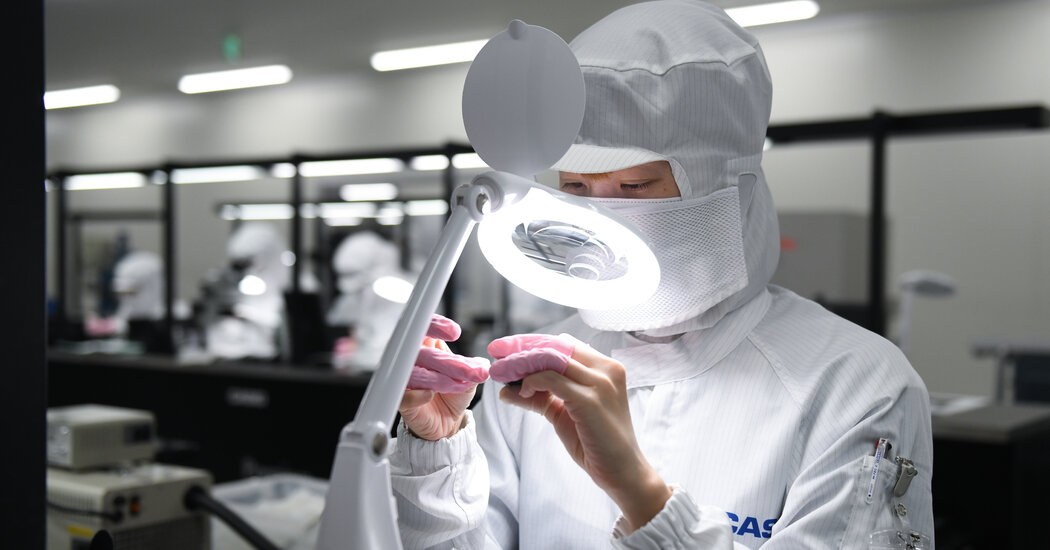Tadakazu Yuki, a manager in another section of the manufacturing technology department, and Masaki Nakano, a general staff member of the same department, led me around the area. “The assembly begins inside the G and follows shape of the letter,” Mr. Nakano said.
About 30 women in their early 20s to 40s, all wearing protective suits, were standing at the G-shaped table. As I walked around, I saw them performing the various steps that go into assembling the MTG-B3000 model: module assembly (the seven screws that are screwed in the movement), solar panel and dial installation, adding the hands to the movement (there are eight hands on that model), hand positioning and angle adjustment, hand height adjustment, installation of the hands and fitting of the case. “Assembling G-Shock is a combination of human skills and machines,” Mr. Nakano said, and the team’s production capacity is said to average about 8,000 watches a month.
Once assembled, a G-Shock still isn’t ready for sale, as it must be tested for things like water resistance, airtightness and durability, depending on the model. “If the watch fails a test, it will be repaired,” Mr. Nakano said. Each high-end G-Shock watch also is inspected; lower-grade ones are not.
After a staff member attaches the strap, there is a final check and the watch then is ready for shipping.
Back to 1983
Last came the real treat: one of the first 1983 G-Shocks (there are only a few of them, kept in the Hamura office, but one was brought over for my visit). I wore it on my wrist and was surprised to see it didn’t look old or much different than current G-Shock models — the definition of timelessness.
In 2017, the company produced its 100 millionth G-Shock (the empty sake barrel from the celebration is in the Yamagata lobby). By 2021, that number had reached 140 million.
“G-Shock is so popular, it’s often imitated,” said Mr. Shinichi, the president of Yamagata Casio, as we finished the tour. “But in the shape of G-Shock there is a beauty that cannot be imitated.”
Sumber: www.nytimes.com
